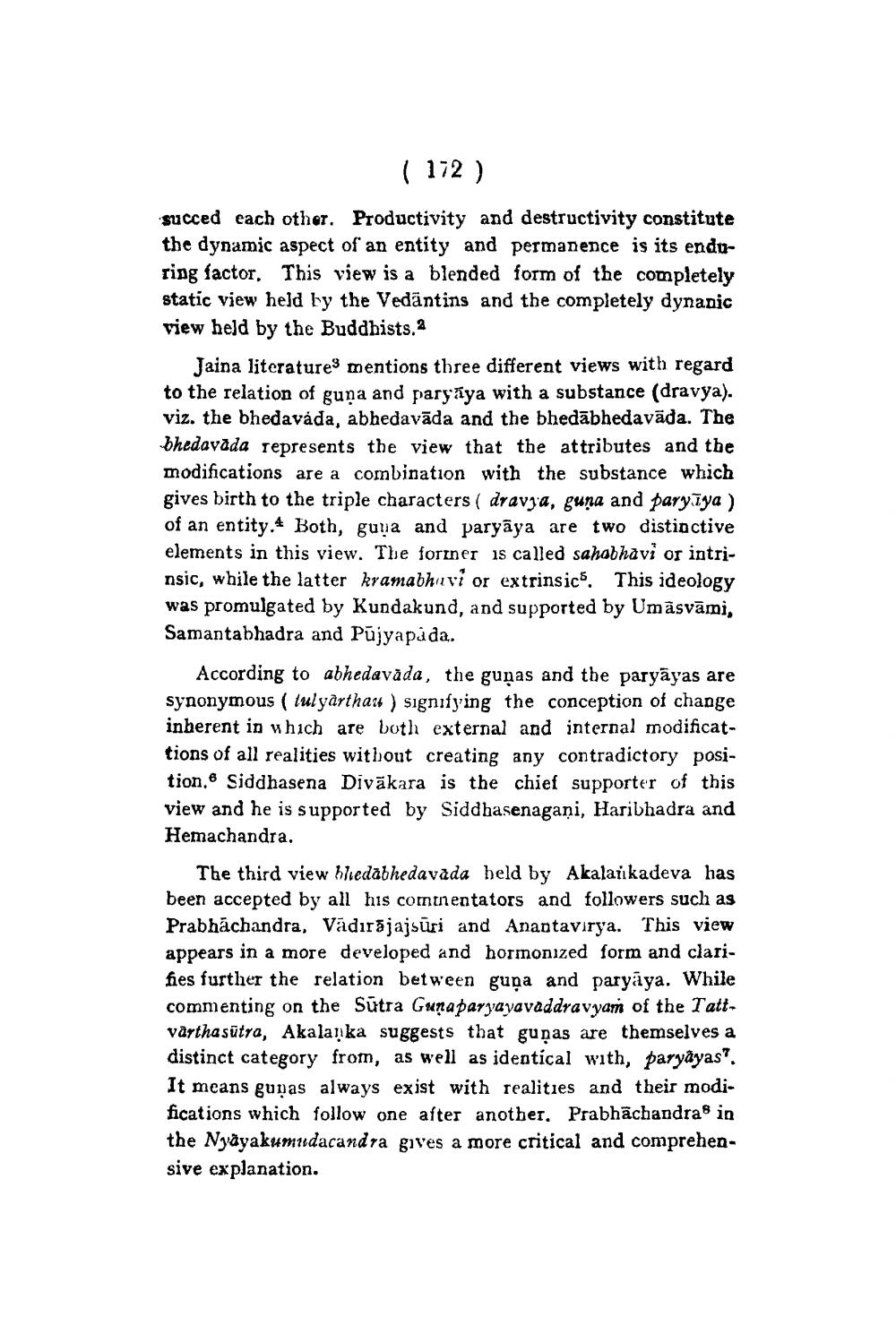________________
( 172 )
succed each other. Productivity and destructivity constitute the dynamic aspect of an entity and permanence is its enduring factor. This view is a blended form of the completely static view held by the Vedāntins and the completely dynanic view held by the Buddhists.
Jaina literatures mentions three different views with regard to the relation of guna and paryaya with a substance (dravya). viz. the bhedaváda, abhedavāda and the bhedābhedavāda. The bhedavada represents the view that the attributes and the modifications are a combination with the substance which gives birth to the triple characters ( dravja, guna and paryżya ) of an entity.4 Both, guna and paryāya are two distinctive elements in this view. The former is called sahabhavi or intrinsic, while the latter kramabhuvi or extrinsics. This ideology was promulgated by Kundakund, and supported by Umāsvāmi, Samantabhadra and Pujyapada.
According to abhedavāda, the guņas and the paryāyas are synonymous ( tulyarthau ) signifying the conception of change inberent in which are both external and internal modificattions of all realities without creating any contradictory position. Siddhasena Divākara is the chief supporter of this view and he is supported by Siddhasenagani, Haribhadra and Hemachandra.
The third view hledabhedavada held by Akalaikadeva has been accepted by all his cominentators and followers such as Prabhachandra, Vādırājajsūri and Anantavırya. This view appears in a more developed and hormonized form and clarifies further the relation between guņa and paryāya. While commenting on the Sūtra Guna paryayavaddravyan of the Tattvärtha sūtra, Akalanka suggests that gunas are themselves a distinct category from, as well as identical with, paryayas?. It means gupas always exist with realities and their modifications which follow one after another, Prabhachandra® in the Ngayakumudacandra gives a more critical and comprehensive explanation.




